Dynamic Super Resolution
Note that this is an archived copy of the original article. Please see here for a more detailed explanation.
By Andrew Burnes on Thu, Sep 18 2014
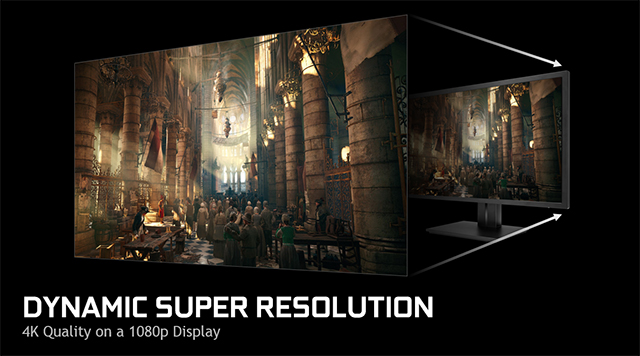
Our new Maxwell architecture introduces a raft of innovative, exciting technologies that make your games better in dramatic ways. Of these new features, Dynamic Super Resolution (DSR) will have largest impact, enhancing any game that supports resolutions above 1920x1080. What does DSR do? Simply put, it renders a game at a higher, more detailed resolution and intelligently shrinks the result back down to the resolution of your monitor, giving you 4K, 3840x2160-quality graphics on any screen.
Enthusiasts with compatible monitors and technical know-how refer to this process as Downsampling or Super Sampling. DSR drastically improves upon this process by applying a high-quality filter specifically designed for the task. DSR also makes the process simpler with on/off integration built directly into GeForce Experience and It's compatible with all monitors, removes the need for technical know-how, and is integrated into GeForce Experience's Optimal Playable Settings.
In Dark Souls II's opening scene, players find themselves surrounded by swaying grass. At 1920x1080, the grass flickers and scintillates heavily as it sways, and appears to be missing detail, as highlighted by our screen capture:

Examining the pixels in detail reveals that the grass is displayed in such a manner because the 1920x1080 resolution lacks a sufficient number of sample points for the grass' fine detail:
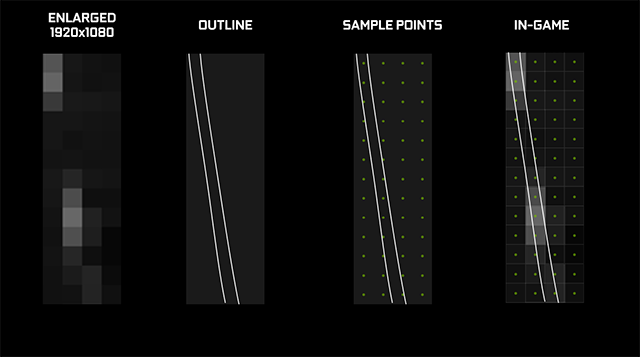
At 3840x2160 (4K), the number of sample points is multiplied by 4, enabling the game to capture and render more detail on each blade of grass.
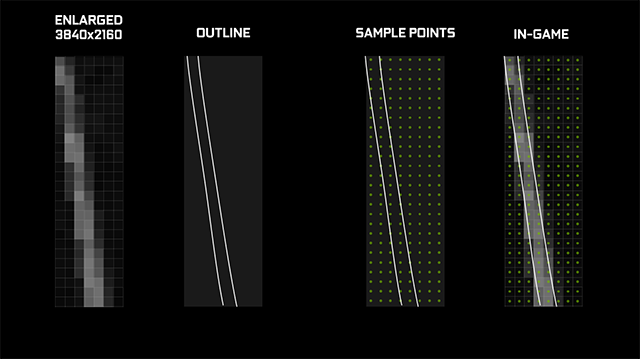
Finally, DSR applies a custom-made 13-tap Gaussian filter as the 4K image is scaled back down to 1920x1080 for display on the monitor:
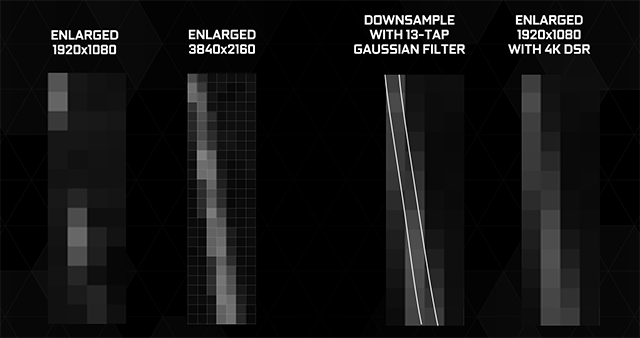
The DSR process significantly improves image quality, and with the addition of the 13-tap Gaussian filter aliasing artifacts experienced with traditional downsampling are greatly reduced or entirely eliminated, further improving image quality.
Check out an enlarged comparison here.
Grass is an effective example for demonstrating sample points, but don't be fooled into thinking grass is the only beneficiary of DSR's capabilities. In almost every game DSR will increase the quality of textures, shadows, effects, anti-aliasing, ambient occlusion shading, geometric detail, and model detail to some degree.
Enabling DSR couldn't be easier: simply click 'Optimize' in GeForce Experience 2.1.2 when GeForce Driver 344.11 WHQL or newer is installed. Only games that lack UI scaling and/or support for resolutions over 1920x1080 are excluded from this feature. If you still wish to enable DSR in these games, perhaps for screenshot purposes, and in other games not supported by GeForce Experience, enter the NVIDIA Control Panel, select the DSR scaling factors you want to use, and select the corresponding DSR resolution in-game.
Additionally, you can adjust the smoothness of the 13-tap Gaussian filter with the NVIDIA Control Panel option directly below in NVCPL, enabling gamers to fine-tune the appearance of the DSR image, similar to sharpness controls found in the popular SweetFX post-process game plugin.
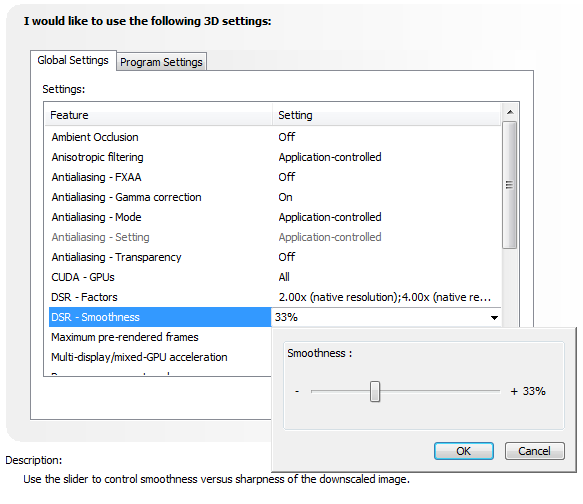
DSR is quite literally a game-changer. At 4K, detail is clearer, effects and shadows better, and overall image quality far superior. Simply click our GeForce Experience Optimize button and you'll instantly take your games to previously unseen levels of detail, immersing you in the experience like never before.
This same technology is also being used to enhance the Virtual Reality experience. To learn more please check out our dedicated VR article.
 Previous
Previous
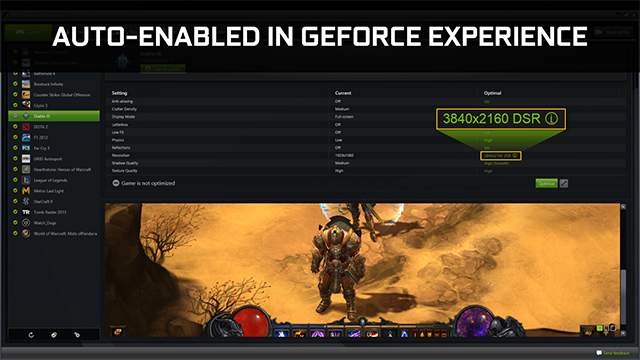
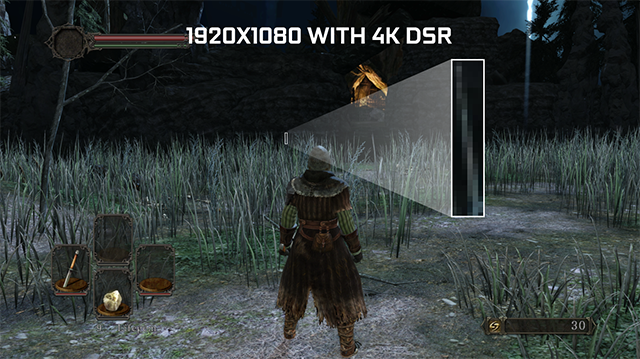
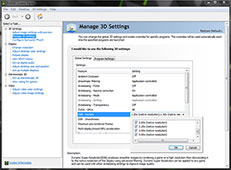
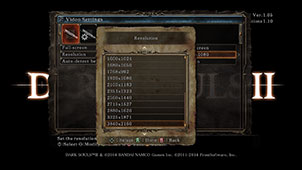
Comments
This comment section is currently disabled. Click here to enable comments and load all Disqus related resources
Please note that by enabling and loading these Disqus resources, you are agreeing to allow everything that comes with a Disqus comment section, including their cookies and all scripting.
This comment section is currently enabled. Click here to disable comments and unload all Disqus related resources
Please note that I have absolutely zero control over this comment section. It is still administered entirely by Nvidia themselves. I have no moderation power whatsoever and don't necessarily endorse any of the comments posted here. In fact, I don't believe this comment section adds much value to the article to begin with but included it only because it existed on the original.